Containerization vs. Virtualization
 Divakar
Divakar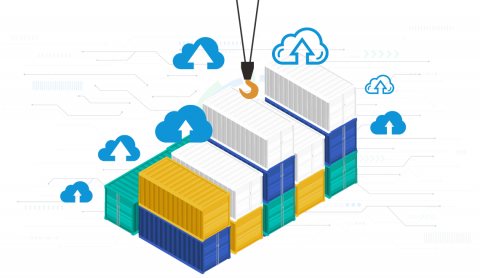
What's the Difference ?
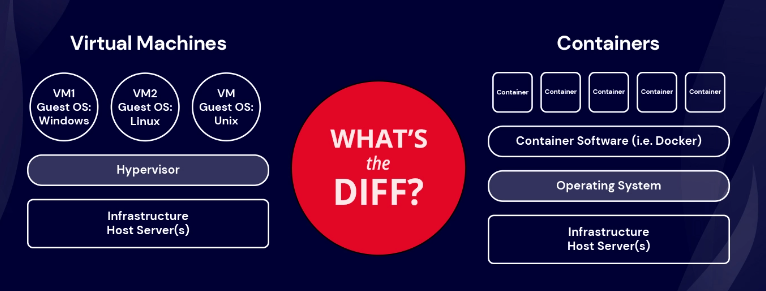
Containerization and virtualization, both, are methods of deploying many isolated services on the same platform and they are both prominent tools within the hosting world. Both are a means for storing data within hosting platforms. And although both terms are becoming increasingly referenced, they are often confused.
Which is the better option? That topic is frequently up for debate and is unfortunately not easily answered. The truth is that the right option depends on each user’s needs. This article will first provide a rundown of both technologies to answer this question. It discusses their uses, the situations where they perform best, and compares the advantages and disadvantages of virtualization vs containerization.
Let’s understand both the concepts before diving into the differences between them.
What is Virtualization ?
Virtualization also refers to the process of creating many instances of operating systems on the same computer.
These instances are called virtual machines. For the applications running over these virtual machines, it appears as if they are working on a system dedicated to that particular application.
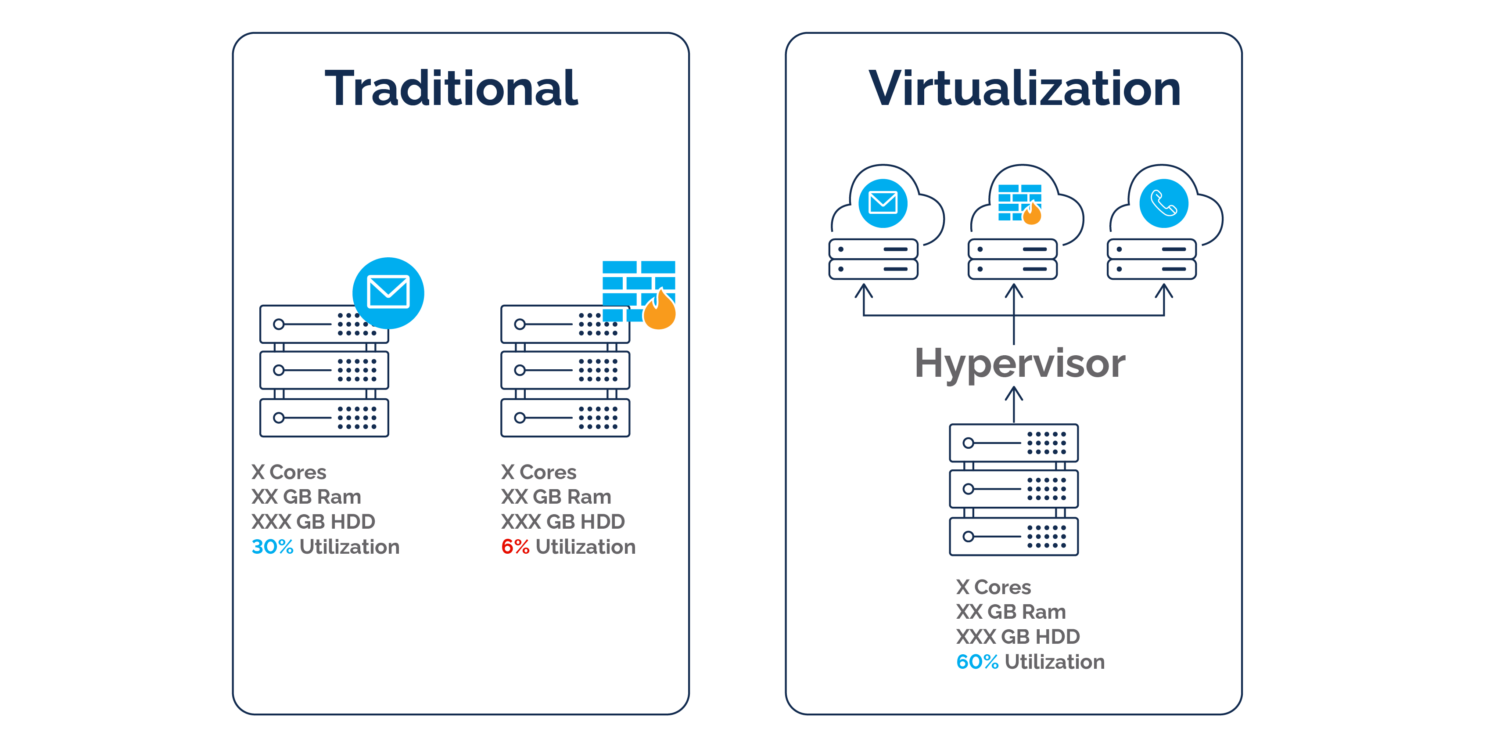
Virtualization is not possible without the hypervisor. A hypervisor, or virtual machine monitor, is the software or firmware layer that enables multiple operating systems to run side-by-side, all with access to the same physical server resources. The hypervisor orchestrates and separates the available resources (computing power, memory, storage, etc.), aligning a portion to each virtual machine as needed.

Examples of virtualization tools include VirtualBox, Hyper-V, VMWare Workstation Player, amongst many others.
Though Virtualization also has some shortcomings. Running multiple VMs at the same time on Host OS leads to performance breakdown/degradation. The reason behind this is because the guest OS runs on the top of host OS, which will have its own kernel and dependencies, this takes up a large mass of system resources like Hard Disk, Processor and RAM.
What is Containerization ?
Containers are a lighter-weight, more agile way of handling virtualization — since they don't use a hypervisor, you can enjoy faster resource provisioning and speedier availability of new applications.
Rather than spinning up an entire virtual machine, containerization packages together everything needed to run a single application or microservice (along with runtime libraries they need to run). The container includes all the code, its dependencies and even the operating system itself. This enables applications to run almost anywhere — a desktop computer, a traditional IT infrastructure or the cloud.

Containers use a form of operating system (OS) virtualization. Put simply, they leverage features of the host operating system to isolate processes and control the processes’ access to CPUs, memory and desk space.
Many containers share the same operating system even though they run different isolated applications. Containerization allows developers to create applications faster without having to worry about bugs when the application is run on a computing environment different than the one on which it was developed.
Containerization tools include Kubernetes, Docker, Rocket, Podman etc...
Containers vs. VMs: What are the differences?
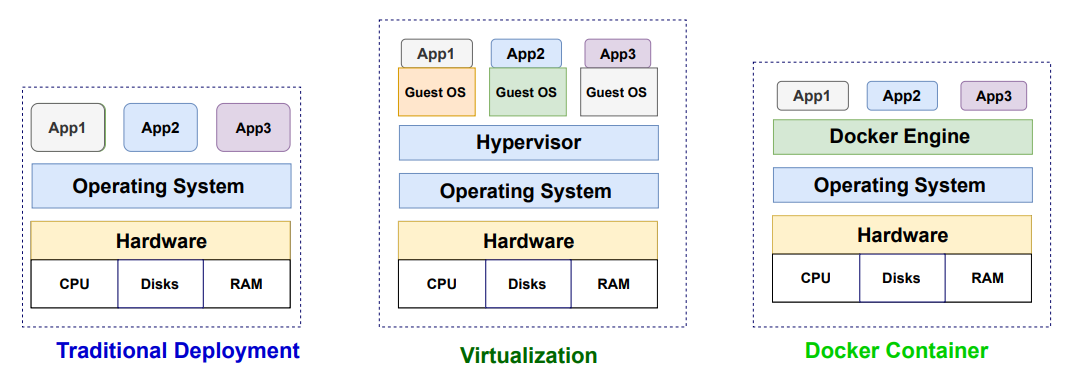
In traditional virtualization, a hypervisor virtualizes physical hardware. The result is that each virtual machine contains a guest OS, a virtual copy of the hardware that the OS requires to run and an application and its associated libraries and dependencies. VMs with different operating systems can be run on the same physical server. For example, a VMware VM can run next to a Linux VM, which runs next to a Microsoft VM, etc.
Instead of virtualizing the underlying hardware, containers virtualize the operating system (typically Linux or Windows) so each individual container contains only the application and its libraries and dependencies. Containers are small, fast, and portable because, unlike a virtual machine, containers do not need to include a guest OS in every instance and can, instead, simply leverage the features and resources of the host OS.
Which Is Better: Virtualization or Containerization?
In comparing virtualization vs containerization, we see that each technology serves a different purpose. Determining the better option relies heavily on the user’s application needs and required server capacity. Virtualization and containerization are both data storage methods that create self-contained virtual packages. But, when comparing virtualization vs containerization, it will help to consider the following factors before deciding which one is right for your needs.
- Speed
- Resources
- Security and isolation
- Portability and application sharing
- Operating system requirements
- Application lifecycle
Choosing one method over the other is a big decision. IT managers should consider all of the significant differences before taking the plunge. To help you decide more efficiently, we’ve created a quick overview in the table below.
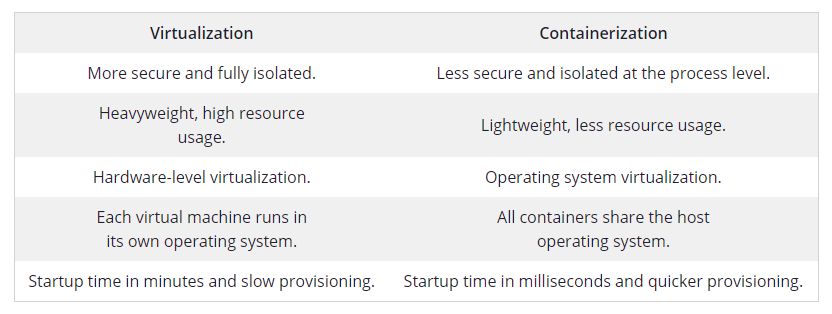
Wrapping Up
Considering all the differences above, it is quite safe to say that containers and virtual machines can’t necessarily be used interchangeably.
Each has its benefits and specific scenarios where the other does not provide practical application. It is dependent on the user as to which system works best for them in the current scenario, and then, they can choose between Containerization and Virtualization.
Subscribe to my newsletter
Read articles from Divakar directly inside your inbox. Subscribe to the newsletter, and don't miss out.
Written by

Divakar
Divakar
Tech Lead 💻 | Python 🐍 | Go 🚀 | AWS ☁️ | AI 🤖 | OSS ❤️ Backend Dev 👨💻 | Cloud ☁️ | GenAI 🧠 | Mentor 🌱 | Builder ⚙️ Code. Cloud. Create. 💡 | Python 🐍 | Golang 🚀 | AI 🔍 Engineer @ Heart 💻 | OSS Contributor 🛠️ | AI Explorer 🤖 Python 🐍 + Go 🚀 | Tech Lead | Cloud Native ☁️ | OSS ❤️